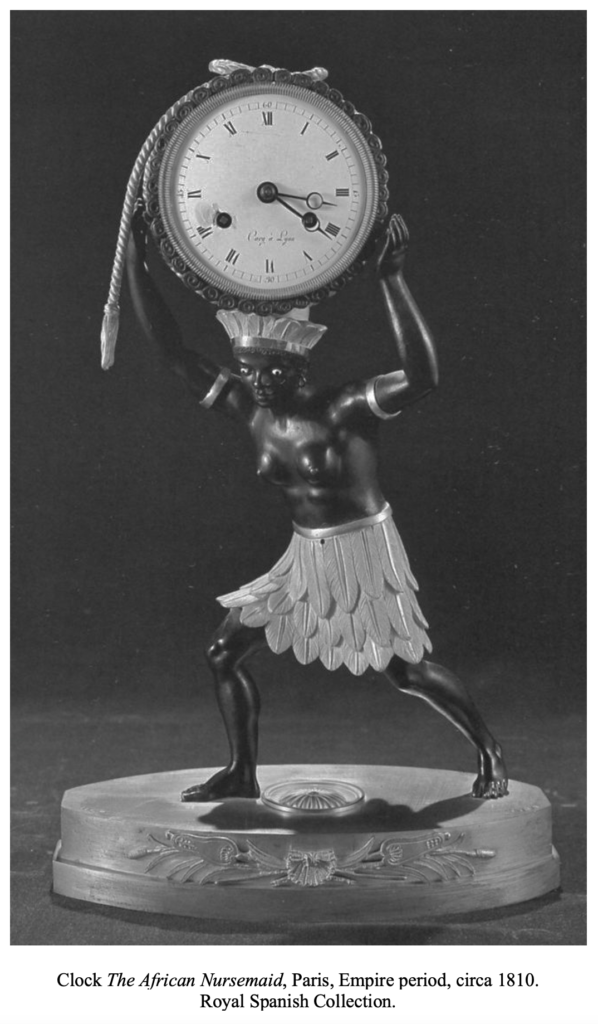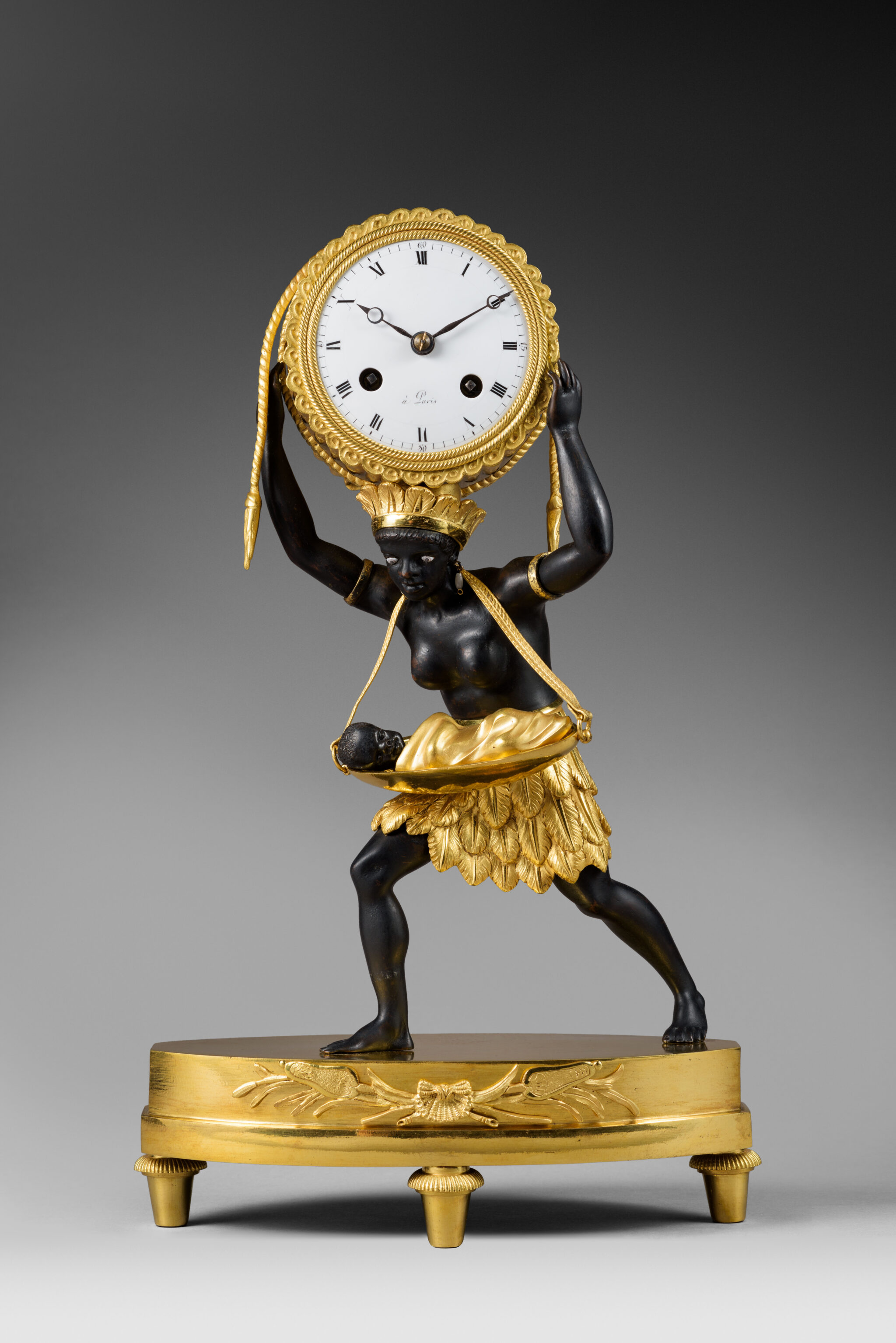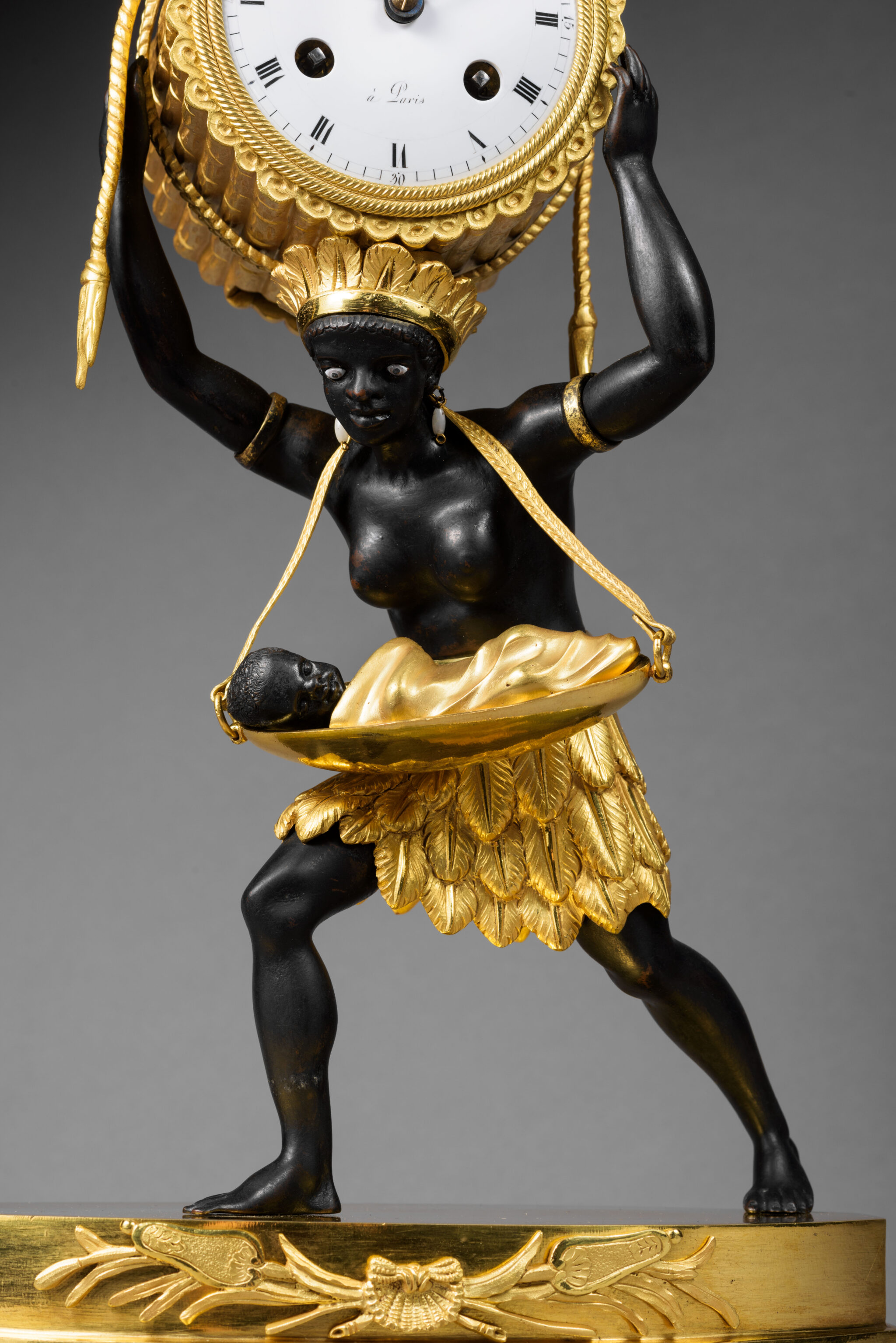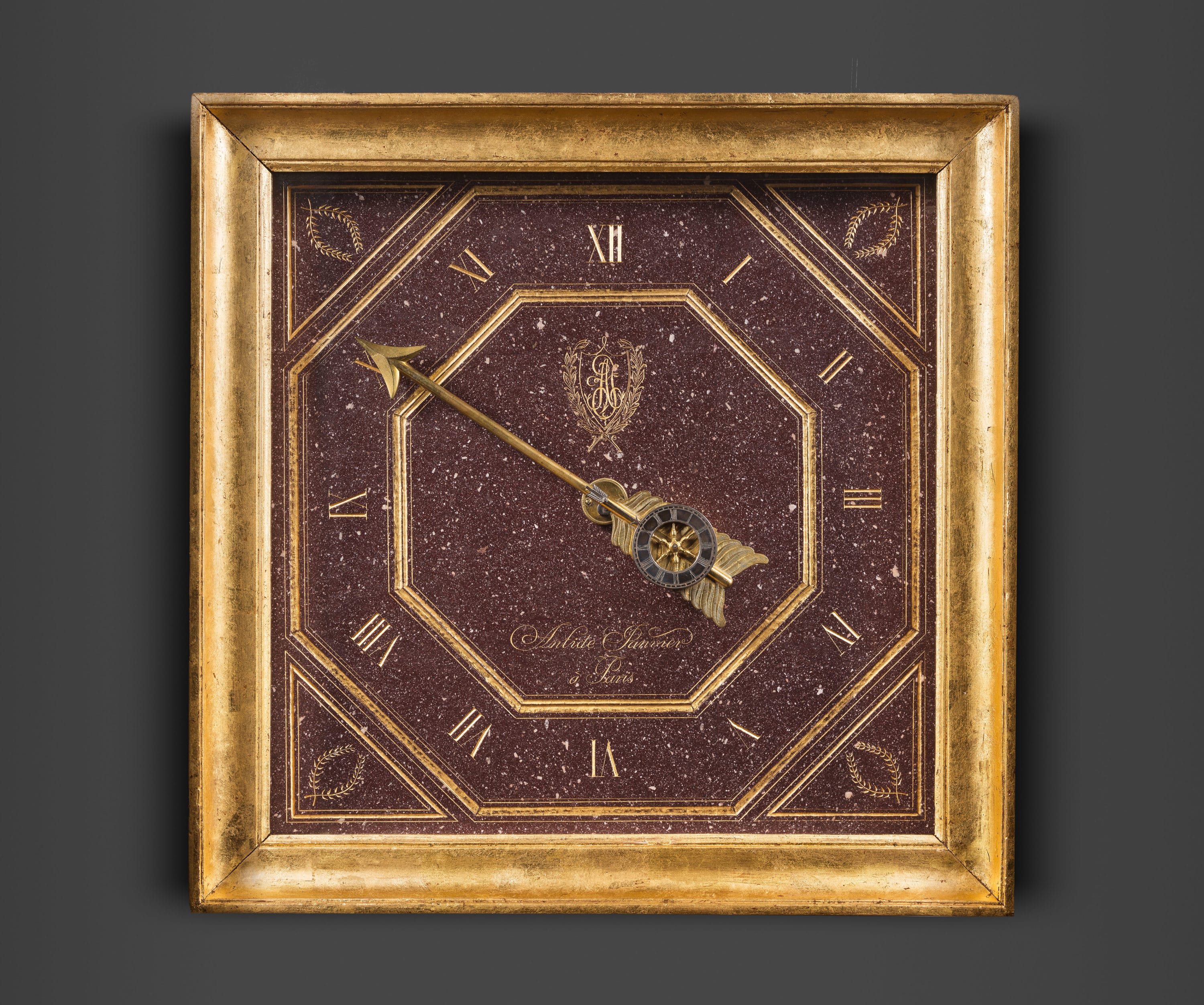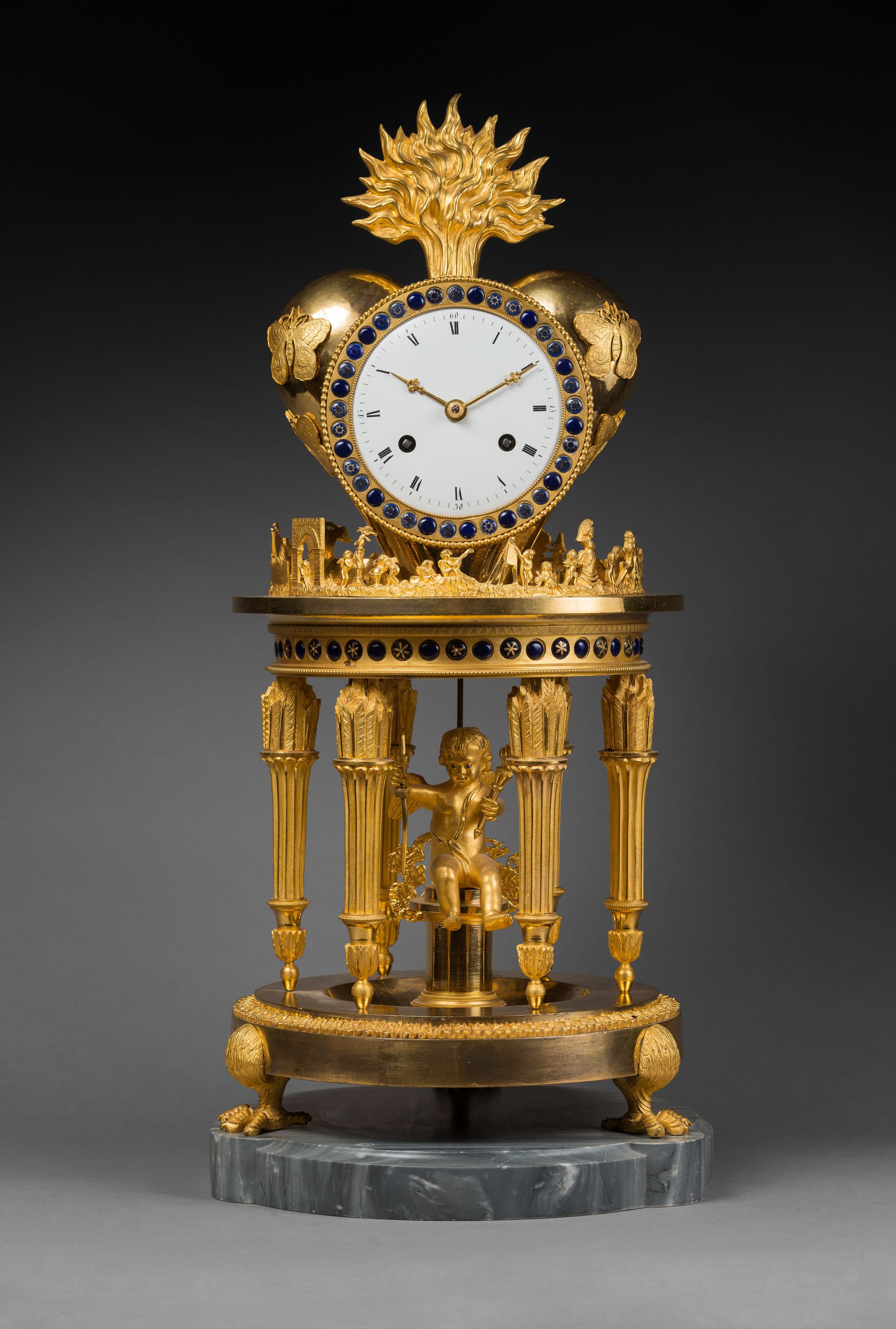Rare Gilt and Patinated Bronze “Noble Savage” Clock
“The African Nursemaid”

Case Attributed to Croutelle the Elder
Paris, Empire period, circa 1810
The round enamel dial indicates the Roman numeral hours and the Arabic fifteen-minute intervals, by means of two Breguet-type hands in blued steel. It is housed in a finely chased case of gilt bronze that represents a bundle of sugar canes that is tied with a cord. It is supported on the head of a fine female figure with enamel eyes, who is wearing a loincloth and a feather headdress. Around her neck is slung a bark cradle that holds a newborn baby. The figure stands upon an oval terrace supported by a stepped base, which is adorned with an applied reed and shell motif. The base is raised upon four toupie feet.
Discover our entire collection of rare clocks and antique mantel clocks for sale online or at the gallery.
The black man as “noble savage” was not widely used as a decorative theme in French and European horology until the late 18th century. The first “au nègre “ or “au sauvage” clocks began to appear in the final décades of the 18th century and the early years of the 19th century. They reflect a philosophical movement that is expressed in such literary and historical works as Paul et Virginie by Bernardin de Saint-Pierre (published in 1787, it spoke of innocence), Atala by Chateaubriand (based on the Christian ideal), and Daniel Defoe’s masterpiece Robinson Crusoe (published in 1719).
The present clock, one of the most sought-after models, represents a young black nursemaid carrying a newborn baby. Its design was inspired by an 1807 drawing by the bronze caster Croutelle the elder, which is today in the Cabinet des Estampes of the Paris Bibliothèque Nationale, (see D. and C. Fléchon, “La pendule au nègre”, in Bulletin de l’Association nationale des Collectionneurs et Amateurs d’Horlogerie ancienne, printemps 1992, n° 63, p. 32, fig. 4).
Very few similar clocks are known today. Among them, one example, whose dial is signed “Herbin à Paris”, is illustrated in H. Ottomeyer and P. Pröschel, Vergoldete Bronzen, Die Bronzearbeiten des Spätbarock und Klassizismus, Band I, Munich, 1986, p. 381, fig. 5.15.27 (see also Giacomo and Aurélie Wannenes, Les plus belles pendules françaises, de Louis XIV à l’Empire, Editions Polistampa, Florence, 2013, p. 314). A second example is illustrated in P. Kjellberg, Encyclopédie de la pendule française du Moyen Age au XXe siècle, Paris, 1997, p. 345, fig. F. A third clock, whose dial is signed “Cary à Lyon”, is in the Royal Spanish Collection (illustrated in J. Ramon Colon de Carvajal, Catalogo de Relojes del Patrimonio nacional, Madrid, 1987, p. 119, catalogue n° 99). One further such clock is in the François Duesberg Museum in Mons (see Musée François Duesberg, Arts décoratifs 1775-1825, Bruxelles, 2004, p. 59).

